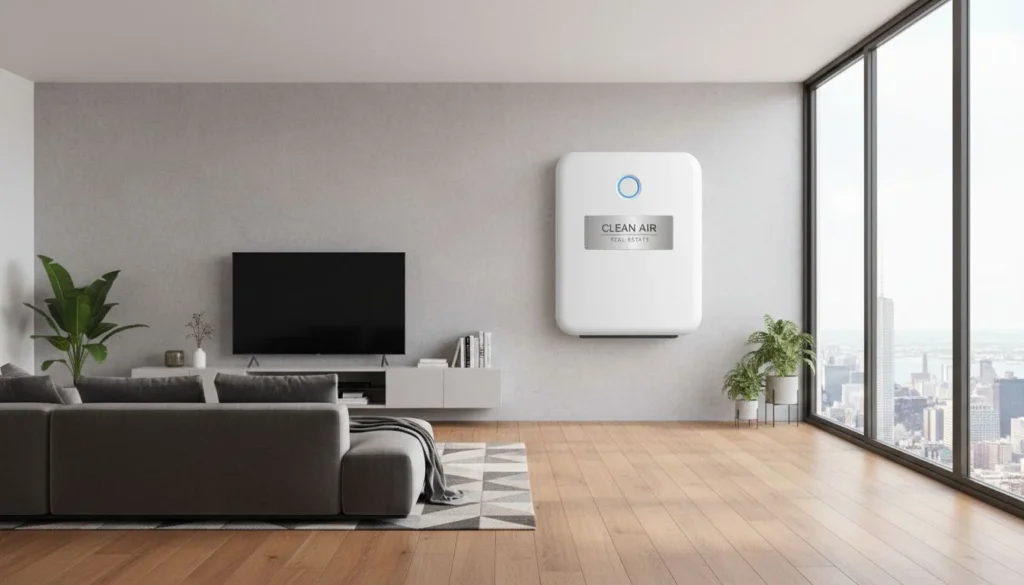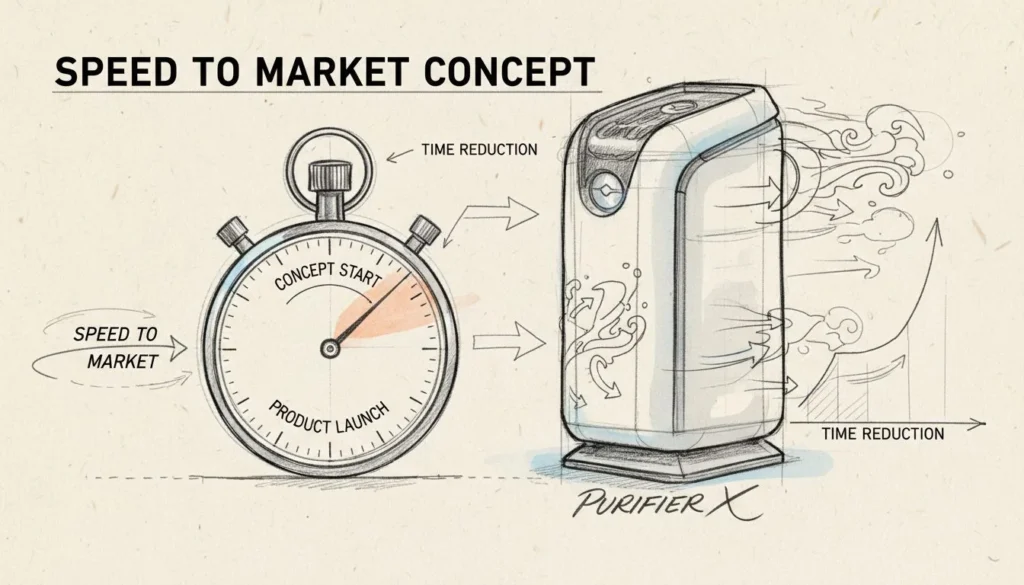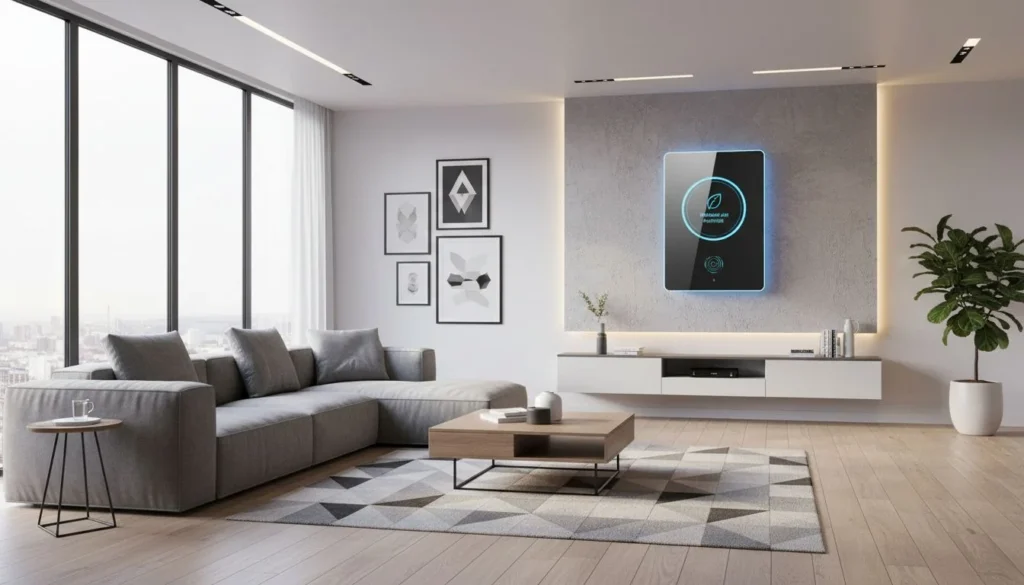HisoAir - профессиональный производитель воздухоочистителей с более чем десятилетним опытом работы. Компания специализируется на производстве машин для обеззараживания воздуха и OEM/ODM-услугах по изготовлению воздухоочистителей для ведущих мировых брендов.
Мы являемся одним из ведущих мировых производителей удобных и высококачественных воздухоочистителей и обеззараживателей.
Как профессиональный производитель воздухоочистителей, HisoMedical (подразделение HisoAir) предлагает различные решения по очистке воздуха, которые могут быть адаптированы к вашему целевому рынку и сценариям использования.
Наши специализированные очистители воздуха медицинского класса способны улавливать плесень и другие микроорганизмы, которые могут витать в воздухе.
Лучшие в своем классе очистители воздуха от плесени
Некоторые очистители HisoAir демонстрируют исключительные результаты, когда речь идет об удалении спор плесени. Эти воздухоочистители оснащены HEPA-фильтрами медицинского класса, угольными фильтрами и другими механизмами, которые обеспечивают эффективное уничтожение плесени.
Ниже перечислены некоторые распространенные типы воздухоочистителей HisoAir.
- HisoAir HA-1601
- HisoAir HA-1968
- HisoAir HA-1000
- HisoAir HA-138
- HisoAir HA-139
- HisoAir HA-W400
Почему очистители воздуха необходимы?
Очистители воздуха - один из самых эффективных способов удаления загрязняющих веществ в воздухе. Кроме того, некоторые воздухоочистители оснащены специализированными фильтрами, которые позволяют им уничтожать вещества, химикаты и соединения, вызывающие неприятный запах.
Ниже перечислены некоторые важные частицы воздухоочистителей:
Удаляет споры плесени
Очистители воздуха могут использоваться для удаления спор плесени из воздуха, чтобы улучшить его качество. В таких очистителях используются вентиляторы, прогоняющие воздух через фильтр, чтобы удалить из него загрязняющие вещества.
Задерживает аллергены
Аллергены - это вещества, которые могут вызывать неблагоприятные иммунные реакции, такие как аллергия или астма. Воздухоочистители работают с HEPA-фильтром; последний популярен тем, что задерживает находящиеся в воздухе аллергены.
Уничтожает вирусы
В воздухоочистителях используются различные технологии фильтрации для обеззараживания и очистки воздуха от взвешенных частиц, загрязняющих веществ, аллергенов и даже вирусов. Это означает, что он фильтрует частицы, а также обеззараживает и уничтожает вирусы.
Уменьшает количество грибков и плесени
Грибки, включая грибы, дрожжи и плесень, могут быть аллергеном для большинства людей. Исследования показывают, что вентилятор очистителя воздуха HEPA эффективно уменьшает количество грибков в воздухе.
Уменьшает количество дыма
Дым - один из основных источников загрязнения воздуха в помещении. Он может образовываться в результате сжигания бревен, лесных пожаров, курения табака и сигарет, а также приготовления пищи. Согласно одному исследованию, портативные воздухоочистители с HEPA-фильтром эффективно снижают воздействие пассивного курения на некурящих людей.
Минимизирует количество токсинов в помещении
Токсины в помещении, такие как химические вещества, производимые строительными материалами, средствами личной гигиены или чистящими средствами, также являются проблемой. Исследования показали, что очистители воздуха HEPA могут минимизировать токсины, производимые 3D-принтерами в помещении.
Ваш надежный поставщик воздухоочистителей медицинского класса
Имея более чем 10-летний опыт производства удобных и высококачественных воздухоочистителей и машин для обеззараживания воздуха, HisoAir является вашим надежным поставщиком воздухоочистителей медицинского класса. Мы предлагаем вам хорошо работающие воздухоочистители, а также воздухоочистители, изготовленные на заказ или JDM OEM ODM, которые подходят для вашего бренда.
HisoMedical стремится предоставить своим клиентам высококачественные продукты и услуги. Вот уже более 20 лет наша сильная инженерная команда и более 10 инженеров специализируются на производстве воздухоочистителей. При производстве высокопроизводительных, но малошумных воздухоочистителей обратите внимание на HisoAir.
Почему стоит выбрать очиститель воздуха HisoAir для борьбы с плесенью
Воздухоочистители HisoAir способны удалить до 99,9% вирусов, бактерий и других загрязняющих веществ, находящихся в воздухе. Конфигурация фильтров большинства воздухоочистителей HisoAir выглядит следующим образом:
Фильтр предварительной очистки
Эти фильтры удаляют крупные частицы, такие как грязь, волосы и пыль. Фильтры предварительной очистки - это первый шаг в процессе фильтрации воздуха в очистителе воздуха. Они не дают основным воздушным фильтрам забиваться мусором, позволяя им задерживать микроскопические загрязняющие вещества.
Фильтр HEPA
HEPA-фильтры HisoAir медицинского класса способны улавливать и задерживать вирусы, бактерии, микробы и более мелкие частицы и загрязняющие вещества, находящиеся в воздухе. Эти фильтры способны улавливать 99,9% загрязняющих воздух частиц размером всего 0,3 микрона.
Фильтр с активированным углем
Эти фильтры удаляют газы, молекулы запахов и химические пары. Они используются в воздухоочистителях для эффективной и долговременной адсорбции вредных газов, таких как толуол, формальдегид и т. д. Фильтры из активированного угля также нейтрализуют летучие органические соединения (ЛОС).
Высокотехнологичный очиститель воздуха от китайской фабрики
На протяжении многих лет мы ощущаем на себе последствия ухудшения состояния воздуха. Все больше людей обеспокоены качеством воздуха, которым они дышат, и пытаются его улучшить. Компания HisoAir готова воплотить эту идею в жизнь.
Мы стремимся стать ведущим мировым поставщиком в своей отрасли, специализируясь на разработке и производстве первоклассных воздухоочистителей и машин для обеззараживания воздуха.
Стремясь создавать высококачественные и удобные в использовании воздухоочистители, мы реализовали более 100 крупных и мелких проектов, включая больницы, государственные учреждения, коммерческие компании и организации.
Почему очиститель воздуха HisoAir является обязательным атрибутом для борьбы с плесенью
Плесень не только неприятна на вид, но и может вызвать неприятный запах в доме. Кроме того, плесень может вызывать проблемы со здоровьем. Споры плесени постоянно присутствуют в воздухе, как в помещении, так и на улице.
Очистители воздуха могут фильтровать споры, сохраняя воздух в вашем доме чистым. Они могут помочь улучшить качество воздуха, если плесень является проблемой. Очистители воздуха удаляют загрязняющие вещества из воздуха, чтобы улучшить качество воздуха в помещении. Они могут фильтровать пыль, дым, перхоть домашних животных, споры плесени, пыльцу и другие мелкие частицы.
Хотя воздухоочистители могут фильтровать переносимые по воздуху споры плесени, важно бороться с плесенью у ее источника. Даже самые лучшие очистители воздуха на рынке не смогут устранить основную причину плесени. Лучшие марки воздухоочистителей используют HEPA-фильтрацию для удаления загрязняющих веществ, аллергенов и спор плесени, обеспечивая более чистый воздух в помещении. Эта функция - одна из причин, по которой воздухоочистители HisoAir идеально подходят для борьбы с плесенью.
Очистители воздуха HisoAir обладают следующими характеристиками, которые делают их незаменимыми в борьбе с плесенью:
- Уникальная конструкция воздуховода - обеспечивает контроль шума и беспрепятственную циркуляцию воздуха
- Простота эксплуатации - ими можно управлять без каких-либо затруднений
- Многослойная система фильтрации - включает в себя фильтр предварительной очистки, фильтр против бактерий, фильтр с активированным углем и фильтр HEPA
- Стерилизация светодиодным ультрафиолетом
- Высокий коэффициент подачи чистого воздуха (CADR)
Как работает очиститель воздуха HisoAir?
В воздухоочистителях используется система фильтрации для удаления частиц из воздуха и рециркуляции чистого воздуха. Процесс работы воздухоочистителей выглядит следующим образом:
- Он втягивает в себя воздух с помощью вентилятора. Качество мотора и вентилятора влияет на общую производительность воздухоочистителя. Поэтому убедитесь, что вы приобрели мотор и вентилятор, которые работают тихо и эффективно.
- Затем воздух проходит через несколько слоев фильтров, изготовленных из различных материалов, таких как стекловолокно или бумага. Большинство микроскопических загрязнений, например споры плесени, задерживаются на HEPA-фильтре. Воздух также может проходить через угольные фильтры, которые способствуют разрушению веществ, вызывающих неприятный запах.
- Фильтр задерживает частицы, превышающие определенный размер. Для разных воздухоочистителей этот размер различен. Например, фильтр HEPA - это самый высокий стандарт. Он способен задерживать частицы размером более 0,3 микрона.
- После очистки воздух выбрасывается обратно в помещение с помощью вентилятора. Эта процедура повторяется, чтобы ваш дом оставался свободным от нежелательных веществ и вредных загрязнений.
Помните, что не все очистители воздуха работают одинаково. Некоторые работают путем нейтрализации, а не описанным выше способом.
Могут ли очистители воздуха HisoAir эффективно помочь справиться с плесенью?
Очистители воздуха HisoAir эффективно устраняют споры плесени. Однако эти очистители не могут остановить активный рост плесени.
Воздухоочистители HisoAir оснащены фильтрами HEPA, задерживающими переносимые по воздуху споры плесени. Эти воздухоочистители также оснащены фильтром предварительной очистки и фильтром с активированным углем. Фильтр предварительной очистки улавливает крупный мусор, который может повредить другие фильтры, а угольный фильтр устраняет запахи плесени.
Наличие УФ-лампы - еще одна особенность, которая делает воздухоочистители HisoAir эффективными в борьбе со спорами плесени. Эти УФ-лампы останавливают размножение спор плесени.
HisoAir HA-1601 является одним из лучших воздухоочистителей для удаления спор плесени и микроскопических загрязнителей из воздуха. Он оснащен необходимыми фильтрами для полной очистки воздуха: HEPA-фильтр, фильтры из активированного угля и UVC-лампа.
Если вы столкнулись с серьезной проблемой плесени в своем доме, вам необходимо решить основную проблему, чтобы получить постоянное облегчение. Если этого не сделать, плесень может распространиться дальше. С другой стороны, если проблема плесени не слишком серьезна, вы можете использовать очиститель воздуха, чтобы удалить споры плесени из воздуха, которым вы дышите.







